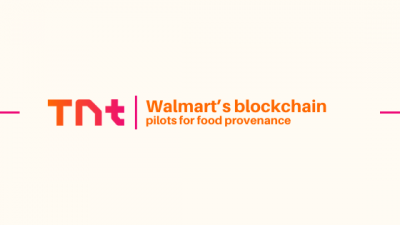Sometimes initiating a bank transfer involves complex words and may look like it is a system designed only for people who studied banking or economics.

Lithuania, 17th Jan 2025 – Sometimes initiating a bank transfer involves complex words and may look like it is a system designed only for people who studied banking or economics. One such term is SEPA bank transfer, which most people don’t know about.
If you have a business in Europe, then you’ve definitely heard about SEPA bank transfers. But if you are not from Europe, this is a system that’s saving European businesses and individuals billions (literally) every year.
SEPA Bank Transfer is also a service that most online payment platforms like Genome offer.
At the first point, it might look and sound like a complex transaction that has higher fees, but SEPA bank transfers are quite the opposite. Basically, it is a system designed for cross-border transactions. Yes, the ones that Ripple is rumored to revolutionize, but until then, we have to rely on the SEPA system.
So, you basically send money to a different country in Europe and pay lower fees.
Sounds, good right? Let’s dive deeper into SEPA bank transfers, find out more about what they are and how can you use them to your advantage.
SEPA in Simple Terms
So, what is actually SEPA? Well, SEPA stands for Single Euro Payments Area. That doesn’t explain a lot, right?
Basically, it is an initiative that unifies how euro payments are made across Europe, making it easy to transfer money between countries. It is relatively a simple concept that follows one set of rules, one system, and one currency (the euro).
Before SEPA was a thing, each country had its own processes, and this resulted in high fees and huge delays. SEPA really revolutionized the way people send money in Europe, and they now have almost instant payments, and significantly lower fees compared to other payment options like SWIFT.
The Different Types of SEPA Transfers
Another thing that is important to understand is that there are different kinds of SEPA transfers. Yes, in most of them, the only difference is the speed, but it is still important to point out since some work in a different way.
So, how do you know which one to choose? Well, the type of SEPA transfer is defined after deciding what you are trying to achieve and what are you sending money for.
1. SEPA Credit Transfers (SCT)
This is in fact the most common type of SEPA transfer, and it is quite straightforward payment (bank-to-bank). So, whether you are an individual or a business paying a supplier in France, SEPA credit transfers or SCT is the best option for you.
In other words, it is simple, has lower fees, and decent processing times.
2. SEPA Direct Debit (SDD)
Do you have subscriptions or recurring payments? SEPA Direct Debit lets businesses pull money directly from your account—provided you’ve given prior consent, of course.
3. SEPA Instant Credit Transfers
The rockstar of the SEPA family, instant transfers do exactly what the name suggests—move money in seconds, 24/7.
- Speed: Less than 10 seconds. No waiting for banking hours or business days.
- Coverage: Not all banks support SEPA Instant, but adoption is growing.
Here’s How a SEPA Transfer Typically Happens:
- You Initiate the Payment: Log in to your banking app or online account.
- Enter Details: Provide the recipient’s IBAN, BIC, and the transfer amount in euros.
- Processing: Your bank routes the payment through the SEPA network.
- Delivery: The funds arrive in the recipient’s account—usually within one business day or faster if you’re using SEPA Instant.
Unlike other international transfers, there are no intermediaries or additional hoops to jump through. Everything happens seamlessly within the SEPA framework.
Why SEPA Matters for Businesses
For businesses operating in Europe, SEPA transfers are a financial lifesaver. They remove the friction of cross-border transactions and reduce the cost of doing business internationally.
Imagine you’re a small e-commerce business in Italy selling handmade products to customers across Europe. Before SEPA, you’d face hefty bank fees for every payment you received from customers in Germany or France. Now, those payments cost next to nothing and arrive quickly, keeping your cash flow intact.
SEPA vs. SWIFT: What’s the Difference?
If SEPA is the local hero, SWIFT is the global superstar. While SEPA handles euro payments within its member states, SWIFT enables international money transfers in multiple currencies.
Here’s a quick comparison:
|
Feature |
SEPA |
SWIFT |
|
Currency |
Euros only |
Multiple currencies |
|
Speed |
1 day or less |
1-5 days |
|
Cost |
Low or free |
Can be expensive |
|
Coverage |
Europe (36 countries) |
Global (200+ countries) |
If you’re sending euros within Europe, SEPA is the obvious choice. For international or multi-currency payments, SWIFT is your best bet—though it comes with higher fees.
The Future of SEPA Transfers
The financial world is constantly evolving, and SEPA is no exception. Innovations like SEPA Instant are paving the way for faster, more efficient payments.
Additionally, the increasing adoption of blockchain technology and digital currencies could further enhance the system’s transparency and security. Who knows, maybe we will see an universally accepted cryptocurrency that will make cross-border transactions even cheaper than SEPA, but until then, it is the best thing we have in Europe.
Media Contact
Organization: genome
Contact Person: genome
Website: https://genome.eu/
Email: Send Email
Contact Number: +37052141409
Address:UAB ‘Maneuver LT’ Žalgirio g. 92-710, LT-09303, Vilnius, Lithuania. E-money institution is supervised by the Bank of Lithuania
Country:Lithuania
Release id:22668
Information contained on this page is provided by an independent third-party content provider. Binary News Network and this Site make no warranties or representations in connection therewith. If you are affiliated with this page and would like it removed please contact [email protected]



Comments